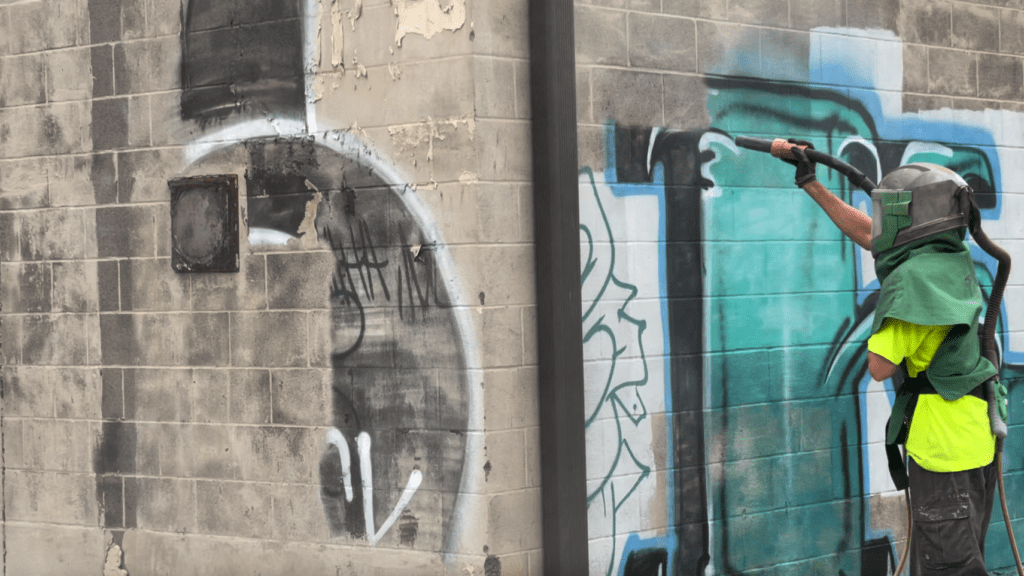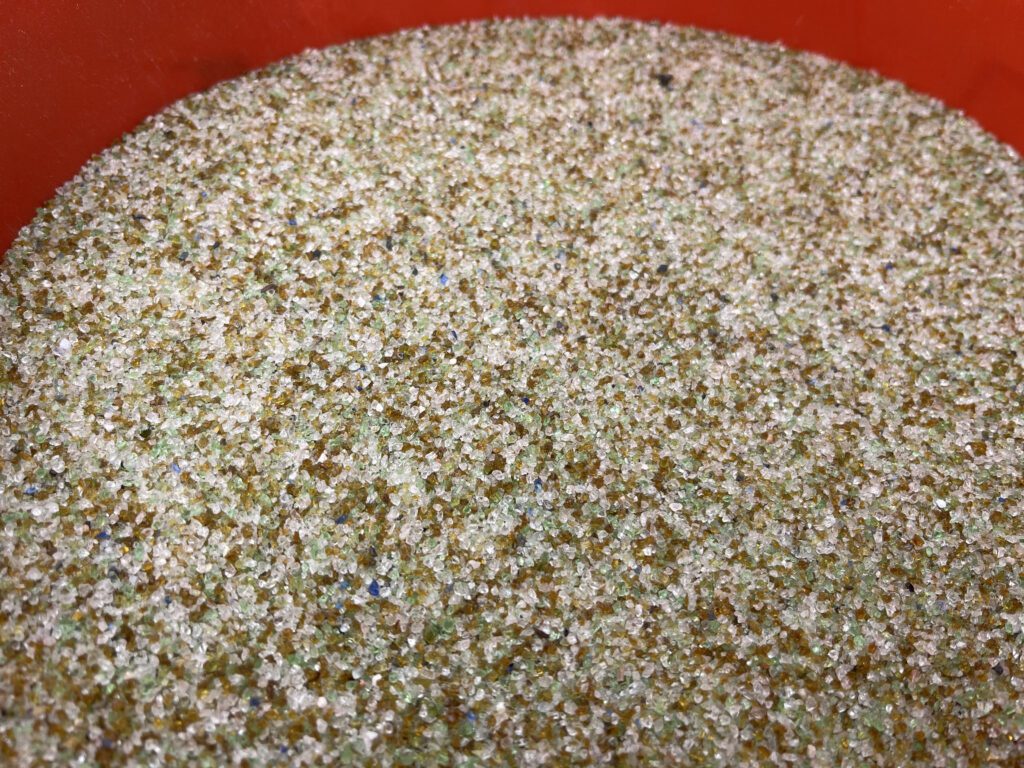Beyond Sand: The Eco-Savvy Benefits of Glass Bead in Sustainable Sandblasting
 Considering the environment when utilizing media blasting techniques is paramount for several reasons. The process can generate dust and airborne particles containing hazardous substances, posing risks to both worker health and nearby residents if not effectively controlled. Prioritizing environmentally friendly blasting media and implementing containment measures is vital to mitigate air pollution and safeguard air quality. Certain blasting media may contain contaminants that can leach into soil and water sources, endangering aquatic ecosystems and human well-being.
Considering the environment when utilizing media blasting techniques is paramount for several reasons. The process can generate dust and airborne particles containing hazardous substances, posing risks to both worker health and nearby residents if not effectively controlled. Prioritizing environmentally friendly blasting media and implementing containment measures is vital to mitigate air pollution and safeguard air quality. Certain blasting media may contain contaminants that can leach into soil and water sources, endangering aquatic ecosystems and human well-being.
By opting for biodegradable or inert blasting media, the risk of water contamination can be reduced, preserving water quality. Improper disposal of blasting media or waste materials can detrimentally impact local ecosystems, contaminating soil, water, and wildlife habitats. Employing environmentally responsible media choices and adhering to proper containment and disposal practices helps mitigate these adverse effects and protects biodiversity. Utilizing abrasive blasting media derived from renewable or recycled sources aids in conserving finite resources and minimizing environmental degradation associated with resource extraction.
Compliance with environmental regulations is also imperative to avoid fines and legal repercussions while demonstrating a commitment to environmental stewardship. Considering environmental factors in media blasting operations enhances a business's reputation, attracting environmentally conscious customers and strengthening relationships with stakeholders. Prioritizing environmental considerations in media blasting activities is essential for safeguarding human health, protecting ecosystems, conserving resources, and promoting sustainable practices for current and future generations.
BUILDING SUSTAINABLE PRACTICES WITH RECYCLED GLASS BLASTING MEDIA
 Sandblasting is an essential process in surface preparation, crucial for achieving the desired finish while minimizing environmental impact. Among the plethora of options available, glass bead emerges as one of the most environmentally friendly choices. Typically sourced from crushed post-consumer bottles or industrial waste glass, recycled glass offers numerous advantages.
Sandblasting is an essential process in surface preparation, crucial for achieving the desired finish while minimizing environmental impact. Among the plethora of options available, glass bead emerges as one of the most environmentally friendly choices. Typically sourced from crushed post-consumer bottles or industrial waste glass, recycled glass offers numerous advantages.
Its utilization circumvents the necessity for new raw materials, thereby reducing the demand for natural resources and the energy-intensive manufacturing processes associated with traditional abrasives like silica sand. The production of silica sand involves mining, transportation, and processing, all of which consume significant energy and contribute to environmental degradation. In contrast, recycled glass repurposes existing waste material, diverting it from landfills and reducing the need for virgin resources.
Recycled glass stands out for its non-toxic and inert nature, posing minimal risk of environmental contamination. Silica sand, commonly used in traditional sandblasting, contains crystalline silica particles known to cause respiratory issues when inhaled. In contrast, recycled glass abrasive does not pose such health risks, making it safer for operators and surrounding environments.
Glass bead abrasive also offers excellent abrasive properties, capable of effectively removing coatings, rust, and contaminants from surfaces without causing excessive damage or generating hazardous dust. Its hardness and abrasive capabilities make it suitable for a wide range of applications, including automotive restoration, industrial cleaning, graffiti removal, and architectural surface preparation. Whether blasting metal, concrete, wood, or masonry, glass bead abrasive provides versatility and reliability in achieving desired surface profiles.
FROM WASTE TO WORKHORSE - THE ENVIRONMENTAL BENEFITS OF GLASS BEAD SANDBLASTING
 Opting for recycled glass in sandblasting operations not only diverts waste from landfills but also contributes to waste reduction and promotes a circular economy. By recycling discarded glass into abrasive media, the lifecycle of glass is extended, reducing the environmental burden associated with glass disposal. The use of glass bead abrasive aligns with sustainable practices, making it an attractive option for environmentally conscious businesses and individuals seeking eco-friendly blasting solutions.
Opting for recycled glass in sandblasting operations not only diverts waste from landfills but also contributes to waste reduction and promotes a circular economy. By recycling discarded glass into abrasive media, the lifecycle of glass is extended, reducing the environmental burden associated with glass disposal. The use of glass bead abrasive aligns with sustainable practices, making it an attractive option for environmentally conscious businesses and individuals seeking eco-friendly blasting solutions.
The process of incorporating recycled glass into sandblasting operations involves crushing and processing discarded glass into granules or beads suitable for blasting applications. These recycled glass abrasives are then propelled at high velocity onto surfaces using compressed air or water, effectively removing paint, rust, corrosion, and other surface contaminants.
The utilization of recycled glass in sandblasting epitomizes a sustainable and effective approach to surface preparation and cleaning. By minimizing the environmental impact of blasting operations and reducing reliance on virgin resources, recycled glass abrasive offers a compelling solution for businesses and individuals committed to sustainable practices. As industries increasingly prioritize environmental responsibility, the adoption of recycled glass abrasives represents a positive step toward a greener and more sustainable future.
HOW DOES BLAST IT CLEAN UTILIZE GLASS BEAD MEDIA?
Blast It Clean incorporates glass bead abrasives into our sandblasting services to deliver efficient and environmentally sustainable solutions. Recycled glass abrasives offer excellent abrasive properties, capable of achieving desired surface profiles while being gentle enough not to damage delicate substrates. This approach aligns with our commitment to sustainable practices and allows us to deliver high-quality sandblasting services while minimizing environmental impact. Give us a call to see if our glass bead media blasting methods are right for your next project.
For eco-friendly media blasting, call Blast It Clean for stripping, cleaning, and painting.
